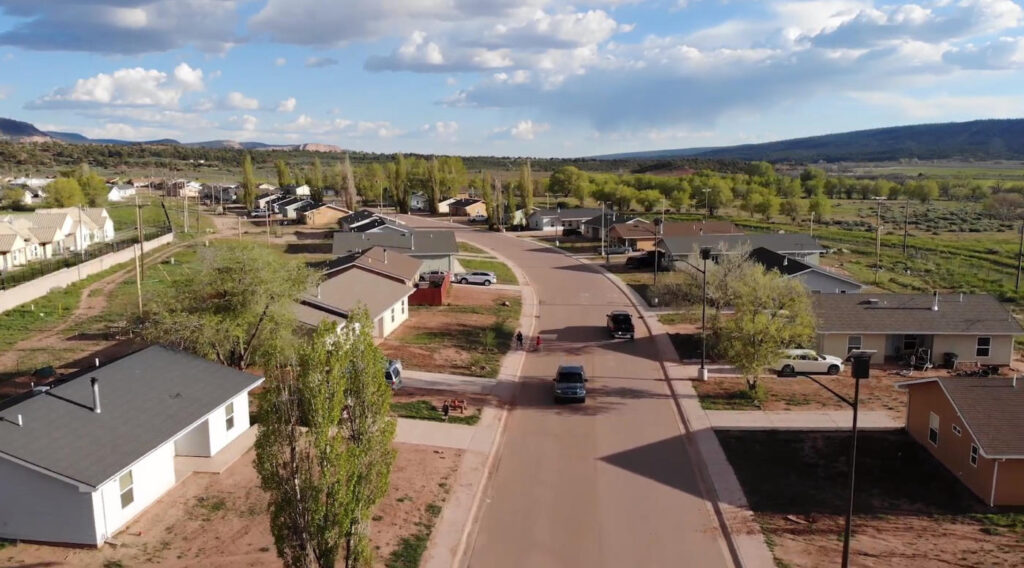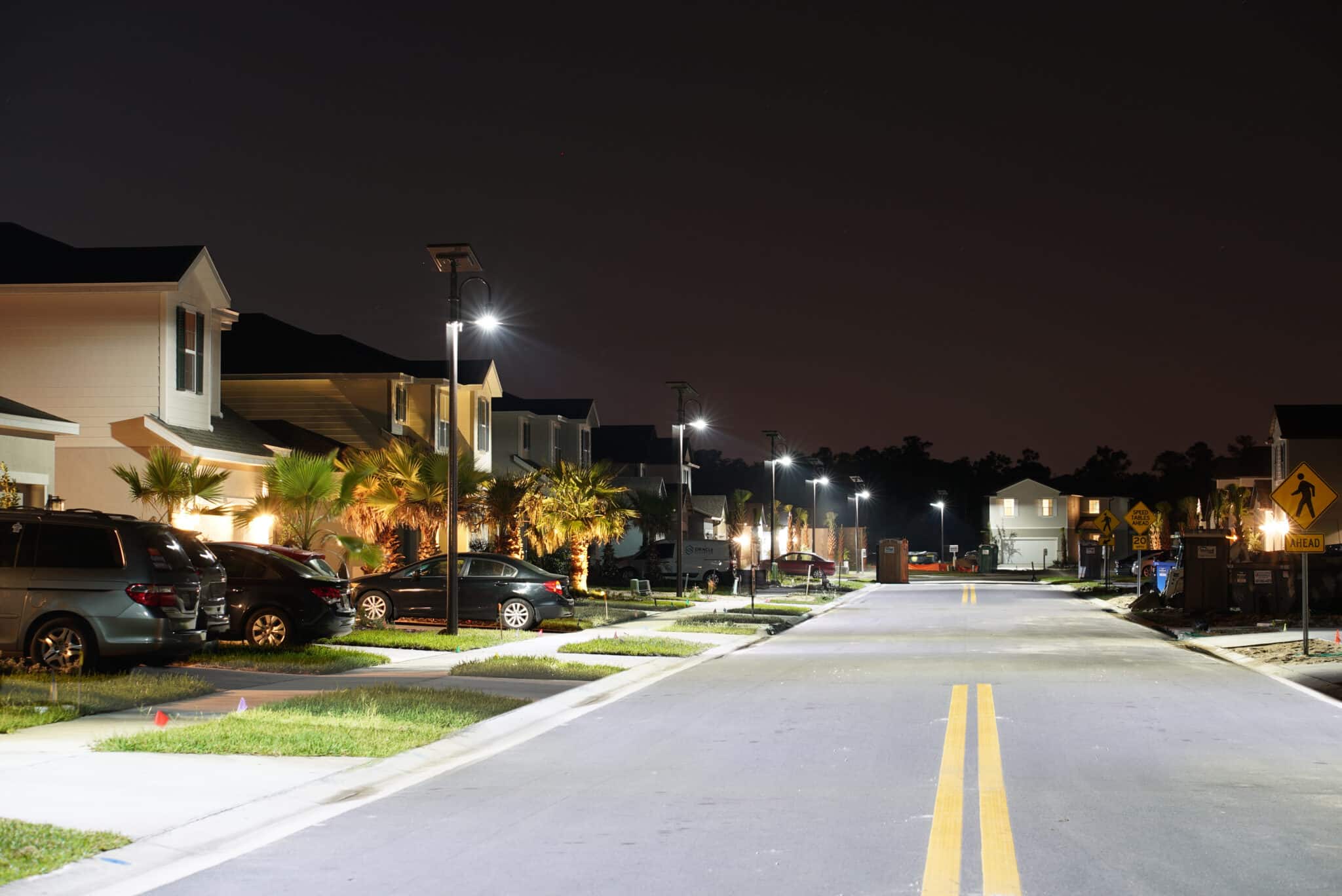

Solar Lighting as a Service is a subscription-based pricing model that allows you to avoid all upfront infrastructure costs from design, to trenching and wiring by paying for your lighting on a monthly basis.
This all-inclusive program provides years of guaranteed worry-free lighting. We look after any necessary upgrades and all of the maintenance and repairs for the complete duration of the contract.
A zero carbon footprint solution provides your entire community with an online dashboard that reports local wind speeds and outdoor air temperature and monitors air quality all from the comfort of their homes. More innovative, faster, and always connected.

● 01
One key benefit of the SLaaS model is that it eliminates the need for upfront overhead or underground infrastructure costs. Traditional lighting systems, such as those powered by grid electricity, often require extensive infrastructure, such as wiring and conduits, to be installed underground or overhead in order to power the lights. Traditional lighting infrastructure can be expensive to install and maintain, particularly in areas where the terrain is difficult or access is limited. In contrast, solar lighting systems are self-contained and do not require any underground or overhead infrastructure to operate. With the SLaaS model, the service provider is responsible for all aspects of the solar lighting system, including the installation of the necessary infrastructure. This means that the customer does not have to invest in any upfront capital to purchase and install the equipment or the infrastructure required to operate it.
● 02
Every project is unique, with the SLaaS model, the service provider typically has a range of pre-engineered lighting solutions that can be customized to meet the specific needs of the customer. This allows for a faster design and manufacturing process, as the service provider does not need to design a new lighting system from scratch.
The service provider is responsible for the installation and deployment of the solar lighting system, which can be done relatively quickly and easily. Since the system is self-contained and does not require any infrastructure, the installation process is often simpler and faster than that of traditional lighting systems.
● 03
Traditional lighting systems depend on the placement and layout of the lights and are often limited by the location of the power source and the infrastructure required to power the lights. This can be particularly challenging in areas where the terrain is difficult or access is limited.
In contrast, solar lighting systems are self-contained and do not require any infrastructure to operate. This means that the placement and layout of the lights can be completely flexible, based on the specific needs of the customer.
The service provider typically includes regular maintenance and inspections as part of the SLaaS program, ensuring that the solar lighting system continues to operate at peak performance. In addition, the service provider is responsible for any necessary repairs or replacements, including components such as batteries or solar panels.
● 04
With traditional lighting systems, the performance of the lights can be affected by a variety of factors, such as weather conditions, power outages, and maintenance issues. This can result in lighting that is inconsistent or unreliable, which can be a significant problem in situations where reliable lighting is critical, such as in public safety or security applications.
In contrast, the SLaaS model provides a guarantee of lighting performance, typically in the form of a service level agreement (SLA). SLA outlines the expected lighting performance of the system, including the brightness level, lighting duration, and maintenance schedule.
The SLA also typically includes a guarantee of uptime, ensuring that the solar lighting system is operational for a specified percentage of time. In the event that the system does not meet the performance standards outlined in the SLA, the service provider is responsible for taking corrective action, such as repairing or replacing the equipment, at no additional cost to the customer.
● 05
Using the SLaaS model, the service provider is responsible for all aspects of the solar lighting system, including upgrades, maintenance, and repairs. This means that the customer does not need to worry about any unexpected maintenance costs or disruptions to their lighting system.
● 06
The SLaaS model provides a turnkey solution for communities that need lighting solutions that are compliant with CDD and HOA guidelines and requirements. By helping to minimize the burden on community leaders and ensure that the community’s lighting needs are being met in a compliant and efficient manner.